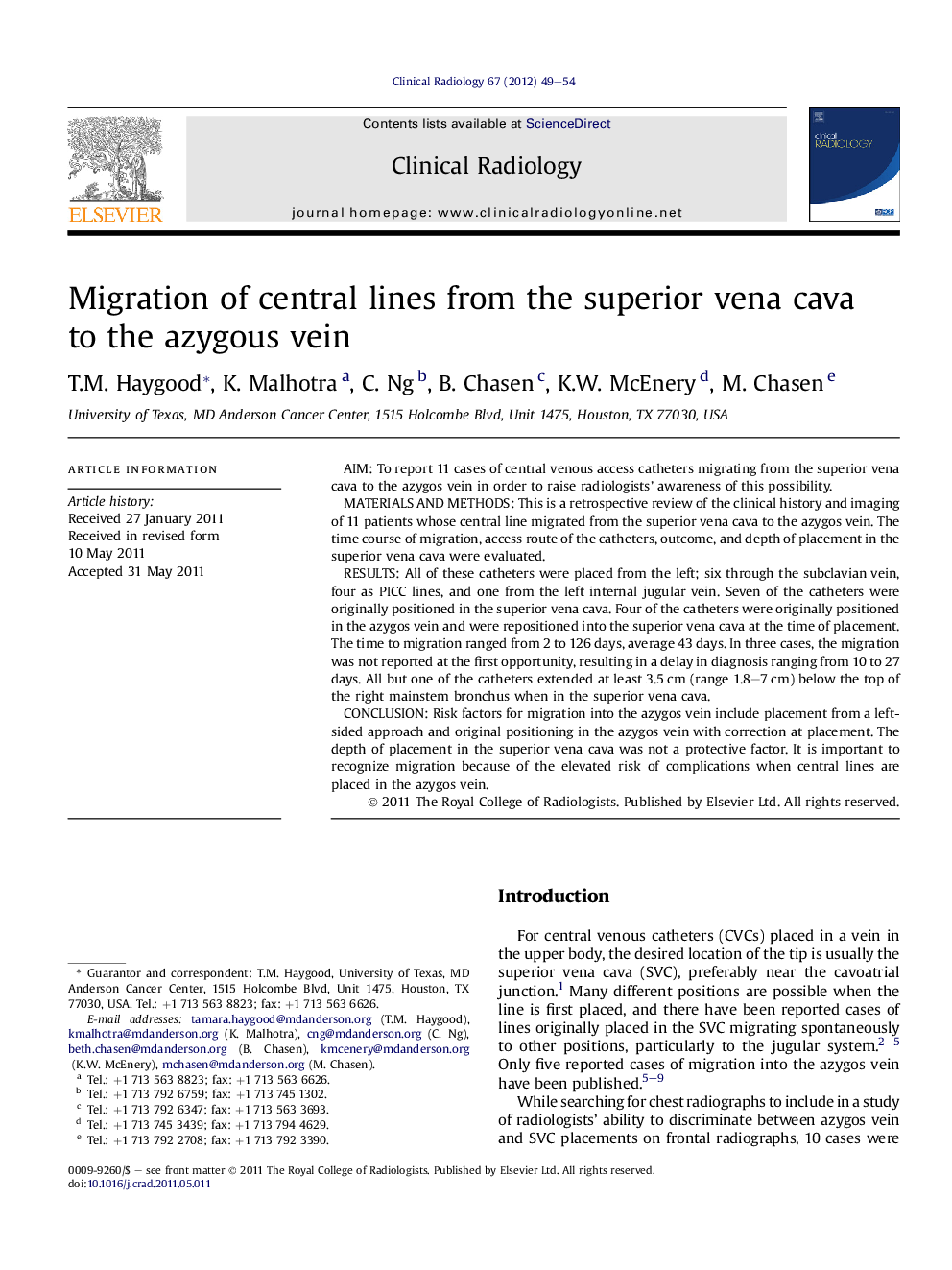| Article ID | Journal | Published Year | Pages | File Type |
|---|---|---|---|---|
| 3982433 | Clinical Radiology | 2012 | 6 Pages |
AimTo report 11 cases of central venous access catheters migrating from the superior vena cava to the azygos vein in order to raise radiologists’ awareness of this possibility.Materials and methodsThis is a retrospective review of the clinical history and imaging of 11 patients whose central line migrated from the superior vena cava to the azygos vein. The time course of migration, access route of the catheters, outcome, and depth of placement in the superior vena cava were evaluated.ResultsAll of these catheters were placed from the left; six through the subclavian vein, four as PICC lines, and one from the left internal jugular vein. Seven of the catheters were originally positioned in the superior vena cava. Four of the catheters were originally positioned in the azygos vein and were repositioned into the superior vena cava at the time of placement. The time to migration ranged from 2 to 126 days, average 43 days. In three cases, the migration was not reported at the first opportunity, resulting in a delay in diagnosis ranging from 10 to 27 days. All but one of the catheters extended at least 3.5 cm (range 1.8–7 cm) below the top of the right mainstem bronchus when in the superior vena cava.ConclusionRisk factors for migration into the azygos vein include placement from a left-sided approach and original positioning in the azygos vein with correction at placement. The depth of placement in the superior vena cava was not a protective factor. It is important to recognize migration because of the elevated risk of complications when central lines are placed in the azygos vein.
